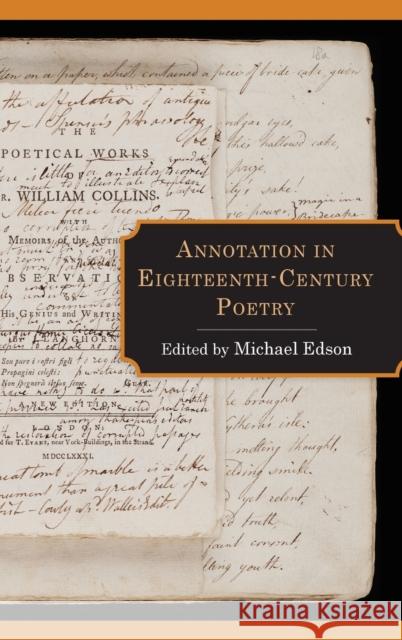Annotation in Eighteenth-Century Poetry » książka
Annotation in Eighteenth-Century Poetry
ISBN-13: 9781611462524 / Angielski / Twarda / 2017 / 278 str.
Annotation in Eighteenth-Century Poetry
ISBN-13: 9781611462524 / Angielski / Twarda / 2017 / 278 str.
(netto: 417,24 VAT: 5%)
Najniższa cena z 30 dni: 434,51
ok. 30 dni roboczych.
Darmowa dostawa!
Recent years have witnessed a growing fascination with the printed annotations accompanying eighteenth-century texts. Previous studies of annotation have revealed the margins as dynamic textual spaces both shaping and shaped by diverse aesthetic, historical, and political sensibilities. Yet previous studies have also been restricted to notes by or for canonical figures; they have neglected annotation's relation to developments in reading audiences and the book trade; and they have overlooked the interaction, even tension, between prose notes and poetry, a tension reflecting eighteenth-century views of poetry as aesthetically superior to prose. Annotation in Eighteenth-Century Poetry addresses these oversights through a substantial introduction and eleven essays analyzing the printed endnotes and footnotes accompanying poems written or annotated between 1700 and 1830. Drawing on methods and critical developments in book history and print culture studies, this collection explores the functions that annotation performed on and through the printed page. By analyzing the annotation specific to poetry, these essays clarify the functions of notes among the other paratexts, including illustrations, by which scholars have mapped poetry's relation to the expanding book trade and the class-specific production of different formats. Because the reading and writing of poetry boasted social and pedagogical functions that predate the rise of the note as a print technology, studying the relation of notes to poetry also reveals how the evolving layout of the eighteenth-century book wrought significant changes not only on reading practices and reception, but on the techniques that booksellers used to make new poems, steady-sellers, and antiquarian discoveries legible to new readers. Above all, analyzing notes in poetry volumes contributes to larger inquiries into canon formation and the rise of literary studies as a discipline in the eighteenth century.











